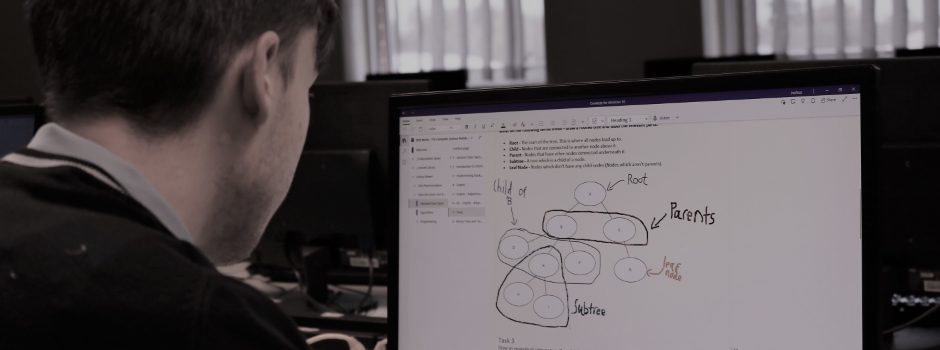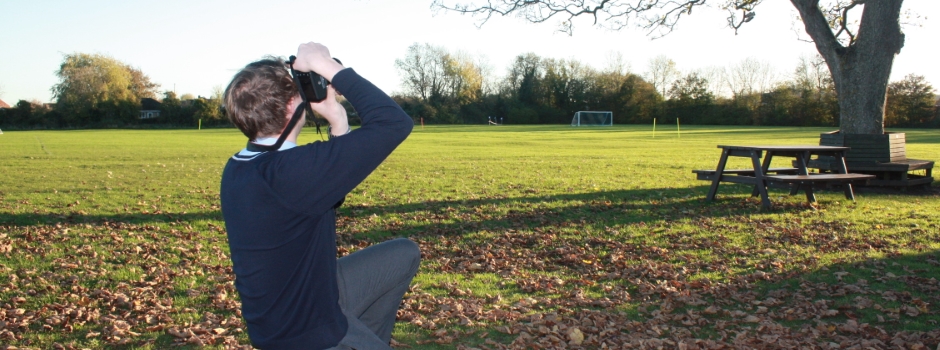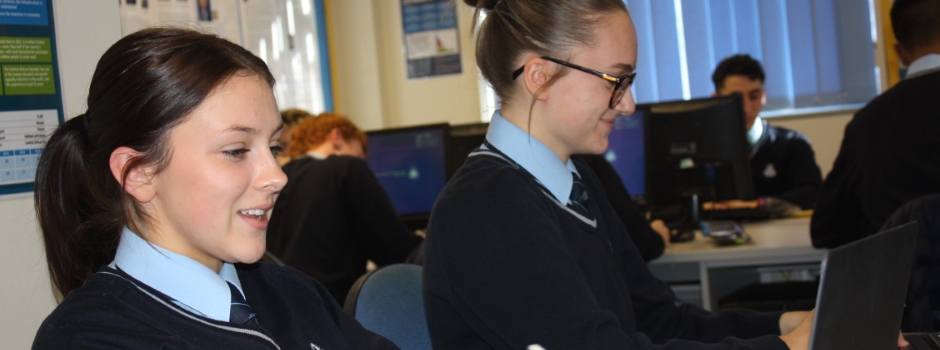



















































"We cannot thank you enough. You never stopped believing in our dreams."
Science Dept - Curriculum on a Page
Showing the curriculum by subject
Biology
Curriculum Details - 2024/2025 (Current)
| Year | Term 1 | Term 2 | Term 3 | Term 4 | Term 5 | Term 6 |
| 9 | Cell Biology: Animal and plant cell function and structure. Microscopy, cell specialisation and differentiation. Culturing Microbes (Biology only). Required practicals 1 and 2. | Cell division and cell transport: Chromosomes, mitosis and the cell cycle. Diffusion, osmosis and active transport. Adaptations of exchange surfaces. Required practical 3. | Animal tissues, organs and organ systems: Digestive system, enzymes, heart, blood and blood vessels. Required practicals 4 and 5. | Non-communicable disease: Coronary heart disease, healthy lifestyle, interactions of diseases and cancer. | Plant tissues, organs and organ systems: transpiration and translocation, sources and uses of minerals. | Infection and response: Communicable disease (viral, fungal, bacterial and protist). Human defence systems, vaccination, monoclonal antibodies (Biology only) and drug discovery and development. Disease in plants (Biology only). |
| 10 | Photosynthesis: Reaction, rates, factors effecting photosynthesis. Uses of glucose. Required practical 6. | Respiration and homeostasis: Aerobic and anaerobic respiration, metabolic processes and the response to exercise. Introduction to homeostasis. | The human nervous system: Structure and function. Brain and eye (Biology only), control of body temperature (biology only). Required practical 7. | Hormonal coordination in humans: Control of blood glucose levels, maintaining water and nitrogen balance (Biology only), kidney dialysis and transplant (Biology only). Human reproductive hormones and the menstrual cycle. Contraception, hormones to treat infertility and negative feedback. | Plant hormones: Control and coordination on plants, uses of plant hormones. Required practical 8 (Biology only). | Reproduction, variation and evolution: Sexual and asexual reproduction, meiosis, genomes, DNA structure (Biology only), genetic inheritance, genetic diseases and Mendel. |
| 11 | Classification and the development of understanding of genetics and evolution: Variation, evolution, selective breeding, genetic engineering, speciation (Biology only), fossils and classification. | Adaptation, interdependence and competition, organisation of ecosystems: Communities, adaptation, carbon and water cycles, decomposition (Biology only). Required practicals 9 and 10. | Biodiversity and the effects of human interactions on ecosystems: Waste management, land use, global warming, deforestation, maintaining biodiversity. | Trophic levels and food production: Factors effecting food security, farming techniques, sustainable fishing, biotechnology (Biology only). Review of fundamental ideas, revision technique, advice and exam skills and exam question practice. | Review of fundamental ideas, including a complete summary of required practical activities. Revision technique advice and exam skills and exam question practice. | Independent preparation and completion of external exams: Biology and Trilogy. Transition work including a choice of tasks on statistical analysis, DNA, biochemistry, gaseous exchange and the biological significance of water. Booklet of key concepts that form the foundation of the study of Biology. |
| 12 | Biological molecules: carbohydrates, proteins, water, enzymes and ATP. Required Practicals 1 & 11. | Biological molecules: lipids. Digestion. Structure of viruses, prokaryotic and eukaryotic cells and their membranes. Cell division (mitosis) and cell transport. Required Practicals 2,3 & 4 | Cell recognition and the immune system. Biological molecules: DNA and RNA. | Gas exchange and mass transport in animals and plants. Required Practical 5 | DNA and protein synthesis. Genetic diversity due to mutations and meiosis. Selection and speciation. Required Practical 6 | Taxonomy and biodiversity. Respiration and photosynthesis. Required Practicals 7,8 & 9. |
| 13 | Energy and Ecosystems. Nutrient Cycles (Nitrogen and Phosphorus) and the impact of agriculture on ecosystems. Population dynamics. Succession. Survival and response: taxis, kinesis, reflexes and tropisms. Required Practicals 10 & 12. | Survival and response: receptors, nerve impulses, synapses and muscles as effectors. Control of heart rate. Homeostasis: blood glucose and blood water potential. | Inheritance. Population genetics and Hardy-Weinberg. Gene expression and cancer. | Control of gene expression: regulation of transcription and translation, epigenetic control. "Junk" DNA and stem cells. Cloning. | Gene technologies: in-vivo and in-vitro gene cloning using the PCR, genetic modification, diagnosing heritable conditions and treating them with gene therapy. Genome projects and genetic fingerprinting. | Essay preparation, revision and practice exams. |
Chemistry
Curriculum Details - 2024/2025 (Current)
| Year | Term 1 | Term 2 | Term 3 | Term 4 | Term 5 | Term 6 |
| 9 | Atomic Structure: Development of the model of the atom, subatomic particles, relative atomic mass (including calculation from relative abundance data), electronic structure. | The Periodic Table: Development of the Periodic Table, metals, non-metals and chemistry of Groups 1, 7, 0 and the transition metals. | Bonding and Structure: formation of ions, basics of ionic, covalent and metallic bonding. Relationship between structure and properties of metals. | Bonding and Structure (cont.): The relationship between Ionic and covalent bonding, structure and properties including carbon allotropes and nanoscience. | Chemical Change (I): Metal oxides, the reactivity series, oxidation, reduction and the extraction of metals. Reactions of acids with metals, the neutralisation of acids, salt production, pH scale and neutralisation. | Chemistry of the Atmosphere: The composition and evolution of the Earth's atmosphere, carbon dioxide and methane as greenhouse gases, common atmospheric pollutants and their sources. |
| 10 | The Rate of Chemical Change: Factors which affect the rates of chemical reactions, calculation of rates of reaction, collision theory, activation energy and the use of catalysts. | Energy Change 1: Exothermic and endothermic reactions, measuring energy changes, reaction profiles and bond energy calculations. | Quantitative Chemistry 1: Conservation of mass, balanced chemical equations, relative formula mass, moles and calculations involving amounts of substances in equations (including identifying limiting reagents). Percentage yield and atom economy. | Organic Chemistry 1: Crude oil, hydrocarbons, alkanes, fractional distillation, properties of hydrocarbons. | Organic Chemistry 1 (Cont...): Cracking, alkenes and addition polymerisation | Quantitative Chemistry 2: Concentrations of solutions, using moles and concentrations in calculations including titrations, amount of substance calculations in relation to volumes of gases. |
| 11 | Organic Chemistry 2 (Separate only): Reactions of alkenes, study of alcohols, carboxylic acids and esters.Addition and condensation polymerisation, including naturally occurring polymers such as DNA. | Electrolysis: molten and aqueous examples, half equations and redox. Including required practical - the electrolysis of aqueous solutions. Fuel cells and batteries (Separate only) | Chemical analysis: pure substances and formulations, chromatography, testing for gases. Separate only: Flame testing, testing for cations and anions, instrumental analysis. | Equilibria: Le Chatelier, the effect of changing concentration, pressure, temperature on eqm. Separate: eqm & the Haber process, fertilisers. Using resources: Potable water, water treatment, including req. practical. Metal extraction, LCAs. Separate: Corrosion, alloys, ceramics, polymers, composites | Review of fundamental ideas, including a complete summary of required practical activities. Revision technique advice and exam skills and exam question practice. | Independent preparation for and completion of external exams: Chemistry and Trilogy. Transition work including the research and summary of the development of atomic theory from first ideas to present day and booklet of key concepts that form the foundation of the study of Chemistry. |
| 12 | Atomic structure, bonding and intermolecular forces, shapes and bond angles in covalent molecules, amount of substance. | Amount of substance continued incl. required practical (titration), periodicity, introduction to organic chemistry. | Properties and reactions of the alkanes and halogenoalkanes, Energetics incl. required practical and Hess's cycles. | Reduction and oxidation, Group 2 Chemistry, Group 7 Chemistry incl. required practical activity, Properties and reactions of Alkenes (including E/Z isomerism), introduction to alcohols. | Chemical Equilibria (including Kc), Oxidation of alcohols incl. required practical activity, Organic Analysis: instrumental (Mass spec. and infra red) and test tube identification tests incl. required practical. | Thermodynamics: entropy and Born Haber cycles AS examination preparation and completion. |
| 13 | Kinetics (including Arrhenius and Rate equation required practicals), gaseous equlibriua (Kp), acid base equilibria (Ka, Kw, buffer solutions, titration curves and required practical). | Optical isomerism, aldehydes, ketones, carboxylic acids and their derivatives. Electrode potentials and electrochemical cells (including required practical). | Transition metal chemistry (including identification of aqueous ions required practical), properties of Period 3 elements and their oxides. Aromatic chemistry (including preparation and purification of an organic solid required practical) | Properties and reactions of amines, Amino acids (including required practical - TLC), proteins, DNA, Polymers (synthetic and natural). | Synthesis to include a complete review of organic reactions and mechanisms, analysis (nmr, IR, chromatography) | Independent preparation for and completion of external exams. |
Physics
Curriculum Details - 2024/2025 (Current)
| Year | Term 1 | Term 2 | Term 3 | Term 4 | Term 5 | Term 6 |
| 9 | Energy stores and systems, changes in energy, kinetic energy, gravitational potential energy, elastic potential energy, energy changes in systems, specific heat capacity, required practical 1 | Power, work done, conservation and dissipation of energy, energy transfers in a system, required practical 2 (physics only), efficiency, national and global energy resources | Current, potential difference and resistance, standard circuit diagram symbols, electrical charge and current, required practical 3, series and parallel circuits | Resistors, filament lamps, diodes, current-voltage characteristic graphs, ohmic and non-ohmic conductors, thermistors, light dependent resistors, required practical 4 | Domestic uses and safety, direct and alternating potential difference, mains electricity, energy transfers in everyday appliances, the national grid, static electricity (physics only) | Review of Energy and Electricity |
| 10 | Waves in air, fluids and solids, transverse and longitudinal waves, properties of waves, required practical 8, reflection of waves (physics only), required practical 9 (physics only), sound waves (physics only), waves for detection and exploration (physics only) | Types of electromagnetic waves, properties of electromagnetic waves 1, required practical 10, properties of electromagnetic waves 2, uses and applications of electromagnetic waves, lenses (physics only), visible light (physics only), black body radiation (physics only) | Forces and their interactions, scalar and vector quantities, contact and non-contact forces, gravity, resultant forces, resolving forces, vector diagrams, free body diagrams | Work done and energy transfer, forces and elasticity, required practical 6, moments (physics only), levers and gears (physics only), distance and displacement, speed, velocity, acceleration | Newton's first law, Newton's second law, required practical 7, Newton's third law, stopping distance, thinking distance, braking distance, momentum, pressure in fluids (physics only) | Waves & Forces Review |
| 11 | density of materials, required practical 5, changes of state, internal energy and energy transfers, changes of state and specific latent heat, particle motion in gases, pressure in gases (physics only) | Structure of an atom, mass number, atomic number and isotopes, development of the model of the atom, radioactive decay and nuclear radiation, nuclear equations, half-life, hazards and uses of radiation (physics only), nuclear fission and fusion (physics only) | Poles of a magnet, magnetic fields, the motor effect, electromagnetism, Fleming's left hand rule, electric motors, loudspeakers (physics only), induced potential (physics only), transformers and the national grid (physics only) | Our solar system, the life cycle of a star, orbital motion, natural and artificial satellites, red shift (all physics only) Trilogy group begins revisiting ideas from year 9 and 10 to target problem areas and build familiarity with exam questions. | Review of fundamental ideas, including a complete summary of required practical activities. Revision technique advice and exam skills and exam question practice. | Independent preparation and completion of external exams: Physics and Trilogy. Transition work including a choice of research tasks on cosmology, cold temperatures, quantum mechanics, medical physics or other physics topic. Booklet of key concepts that form the foundation of the study of Physics. |
| 12 | Quantities and units, derived units, scalar and vector quantities, adding and resolving vectors, current and charge, moving charges, Kirchoff's first law, mean drift velocity | Distance, displacement and velocity, acceleration, equations of motion, free fall, projectile motion, circuit symbols, potential difference and electromotive force, resistance, resistivity, Required practicals 1 and 3. | Force, mass and weight, drag and terminal velocity, moments, couples and torques, triangle of forces, Archimedes' principle, Kirchoff's laws, combining resistors, internal resistance, potential divider, Required practical 4. | Work done and conservation of energy, kinetic and gravitational potential energy, power and efficiency, progressive waves, wave properties, reflection, refraction, diffraction and polarisation, intensity, EM waves, refractive index, total internal reflection, Required practical 6. | Springs and Hooke's law, elastic potential energy, deforming materials, stress and strain, Young modulus, superposition and interference, Young's double slit experiment, stationary waves, harmonics, Required practicals 2 and 5. | Newton's first and third laws, linear momentum, Newton's second law, impulse, collisions in two dimensions, the photon model, photoelectric effect, Einstein's photoelectric effect equation, wave-particle duality. |
| 13 | Temperature, solids, liquids and gases, internal energy, specific heat capacity, specific latent heat, kinetic theory of gases, gas laws, root mean square speed, Boltzmann constant, Required practicals 8 and 11. | Angular velocity and the radian, centripetal acceleration, exploring centripetal forces, oscillations and simple harmonic motion, analysing simple harmonic motion, simple harmonic motion and energy, damping and driving, resonance, Required practical 10. | Gravitational fields, Newton's law of gravitation, Kepler's laws, satellites, gravitational potential, objects in the universe, star life-cycle, Hertzsprung-Russell diagram, stellar luminosity, astronomical distances, Doppler effect, Hubble's law, Big Bang Theory | Capacitors in circuits, energy stored by capacitors, charging and discharging capacitors, electric fields, Coulomb's law, uniform electric fields, charged particles in electric and magnetic fields, Faraday's law, Lenz's law, transformers, required practical 9. | Rutherford scattering, antiparticles, hadrons and leptons, quarks, nuclear decay, half-life, modelling radioactive decay, carbon dating, binding energy, nuclear fission and fusion, X-rays, CAT scans, gamma camera, PET scans, ultrasound, required practical 7. | Exam preparation. |
Science
Curriculum Details - 2024/2025 (Current)
| Year | Term 1 | Term 2 | Term 3 | Term 4 | Term 5 | Term 6 |
| 7 | Introduction to science. Biology 1 - Cells and microscopes: Cell organelles, diffusion, unicellular life, skeleton, muscles and joints. Science key skills. | Chemistry 1 - Particle theory, atoms and elements: Properties of matter, particles, pressure, changing state, classifying materials. Physics 1 - Forces: Squashing, stretching, drag, friction, Hooke's law, resultant forces. Science key skills. | Biology 2 - Reproduction and variation: Reproductive systems, menstrual cycle, pregnancy, drug development, plant reproduction. Chemistry 2 - Compounds and mixtures: Physical and chemical changes, oxidation, combustion, conserving mass, mixtures, filtration, chromatography, distillation. Key skills. | Physics 2 - Energy: What is energy, generating electricity, cost of electricity, series and parallel circuits, Ohm's law. Science key skills. | Biology 3 - Plants and photosynthesis: What is photosynthesis, leaf structure, soil nutrients, fertilisation and seed dispersal, food chains and webs, interdependence. Science key skills. | Chemistry 3 - Chemistry of the earth and atmosphere: structure of the Earth, rock types, atmosphere, carbon cycle, natural resources. Physics 3 - Waves: What are waves, light waves, cameras, eyes, sound waves, hearing, splitting light. Science key skills. |
| 8 | Biology 1 - Food and Digestion: Balanced diet, food nutrients, food tests, digestive system, model gut, malnutrition, energy in food. Chemistry 1 - Chemical reactions: Hazards, reactions, acids and alkalis, neutralisation, variables in science, rates of reaction, catalysts. | Physics 1 - Magnets and Electromagnets: Magnets, magnets in circuits, charge, current, voltage, magnetic fields, making electromagnets, static electricity. | Biology 2 - Respiration: Lund structure and function, breathing, asthma, lung diseases, aerobic and anaerobic respiration, fermentation. Chemistry 2 - The Periodic Table: Metals and non-metals, alkali metals, halogens, noble gases, reactivity, extracting metals. | Physics 2 - Heat and Energy: Kinetic theory, heat and temperature, conduction, convection, radiation, cooling, applications of energy transfer. | 8B3 - Inheritance and Selection: Interdependence, inheritance, modern food production, adaptation, Darwin, Mendel, DNA. Chemistry 3 - The Reactions of Metals: Displacement, naming and making salts (Acids and alkalis, bases, carbonates, metals) | Physics 3 - The Earth in Space: Solar system, planets, days seasons years and moon phases, the life of stars, images from space, telescopes. |